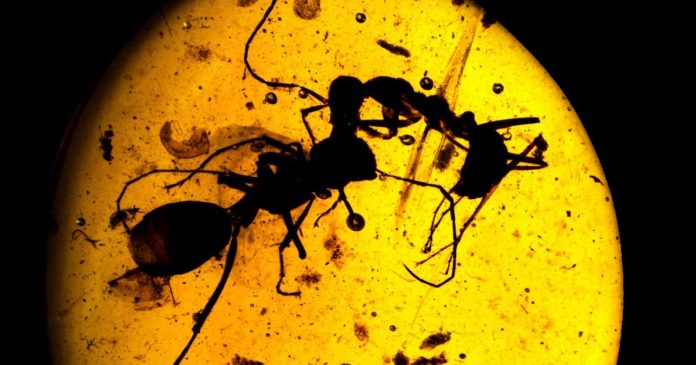Amber that contains insects is a rarity. Amber that contains two species of ancient insects engaged in a life-and-death struggle is a phenomenal find. David Coty, Romain Garrouste, Frédéric Legendre, André Nel from the Muséum National d’Histoire Naturelle in Paris, France and colleagues are the first to describe termites and ants in battle preserved in a piece of amber.
The amber was found in the Totolapa deposit in Chiapas, Mexico. The amber depicts a battle between Azteca ants and Nasutitermes termites that occurred during the Miocene. The insects could be 20 million years old. Evidence of a conflict is substantial including an ant holding a termite in its mouth and a termite that is almost bitten in half.
The piece of amber is small. It measures 1.6 centimeters long, one centimeter wide, and 1.2 centimeters high. The researchers used sliced CT scans to provide the resolution necessary to extract the details of the insect conflict form the amber. The amber depicts a raid of army ants on a termite colony. The amber is called a syninclusion because it contains more than one species.
Ants and termites continue the same type of combat over territory today. This discovery indicates that ant and termite species that exist at present were living in Mexico between five million years ago and 20 million years ago. The same ant species from the same time period has been documented in amber from Venezuela in 1855.
Insects in amber vary in price depending on the insect, where the amber comes from, and the state of preservation of the insect fossil based on the selection presented at the Amberica West website. One might expect this newly discovered piece of amber to fetch more than the usual price due to the uniqueness of two species engaged in battle. The significance of the find is the first hard evidence that ants and termites have been warring against each other for at least five million years and that both species have lived in Mexico for at least that long.















